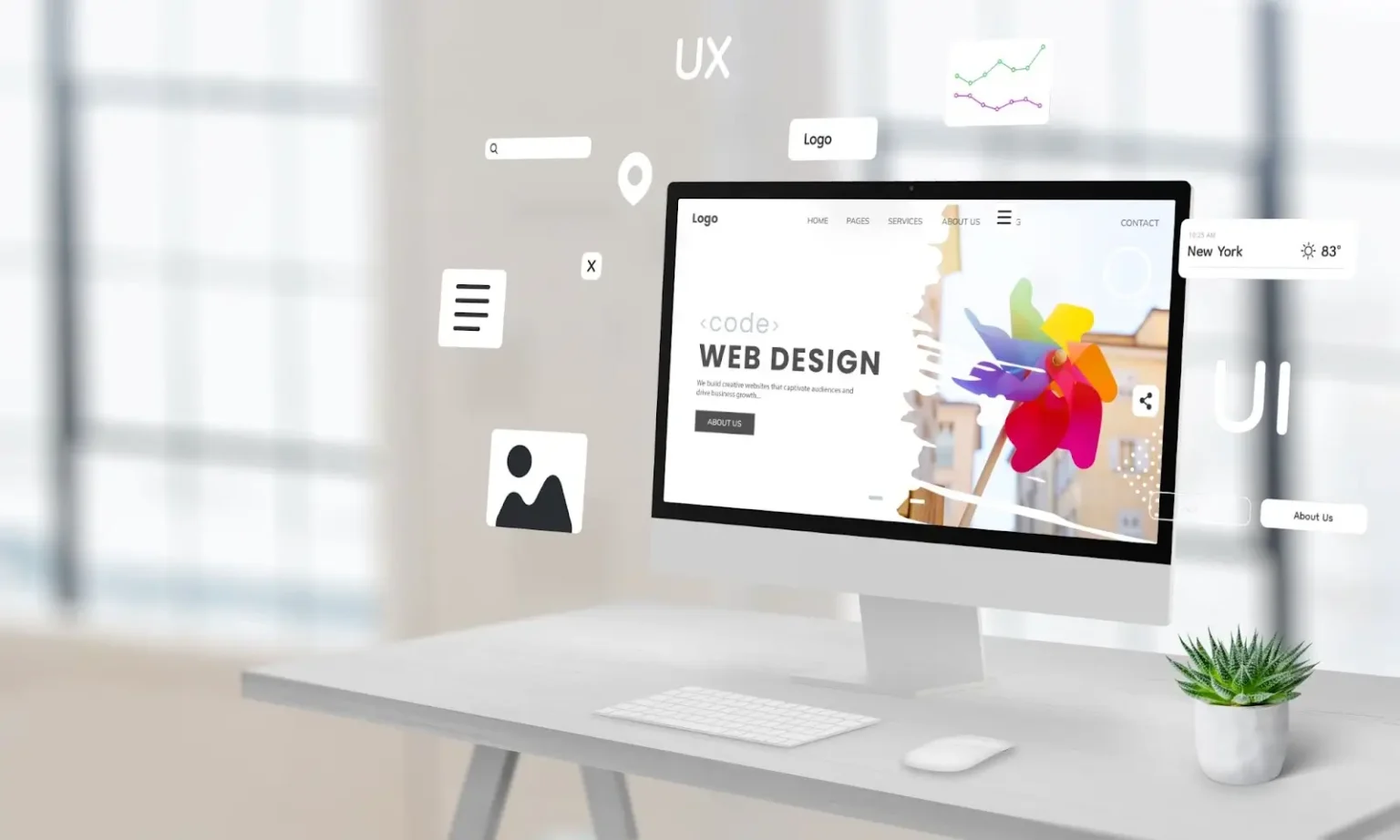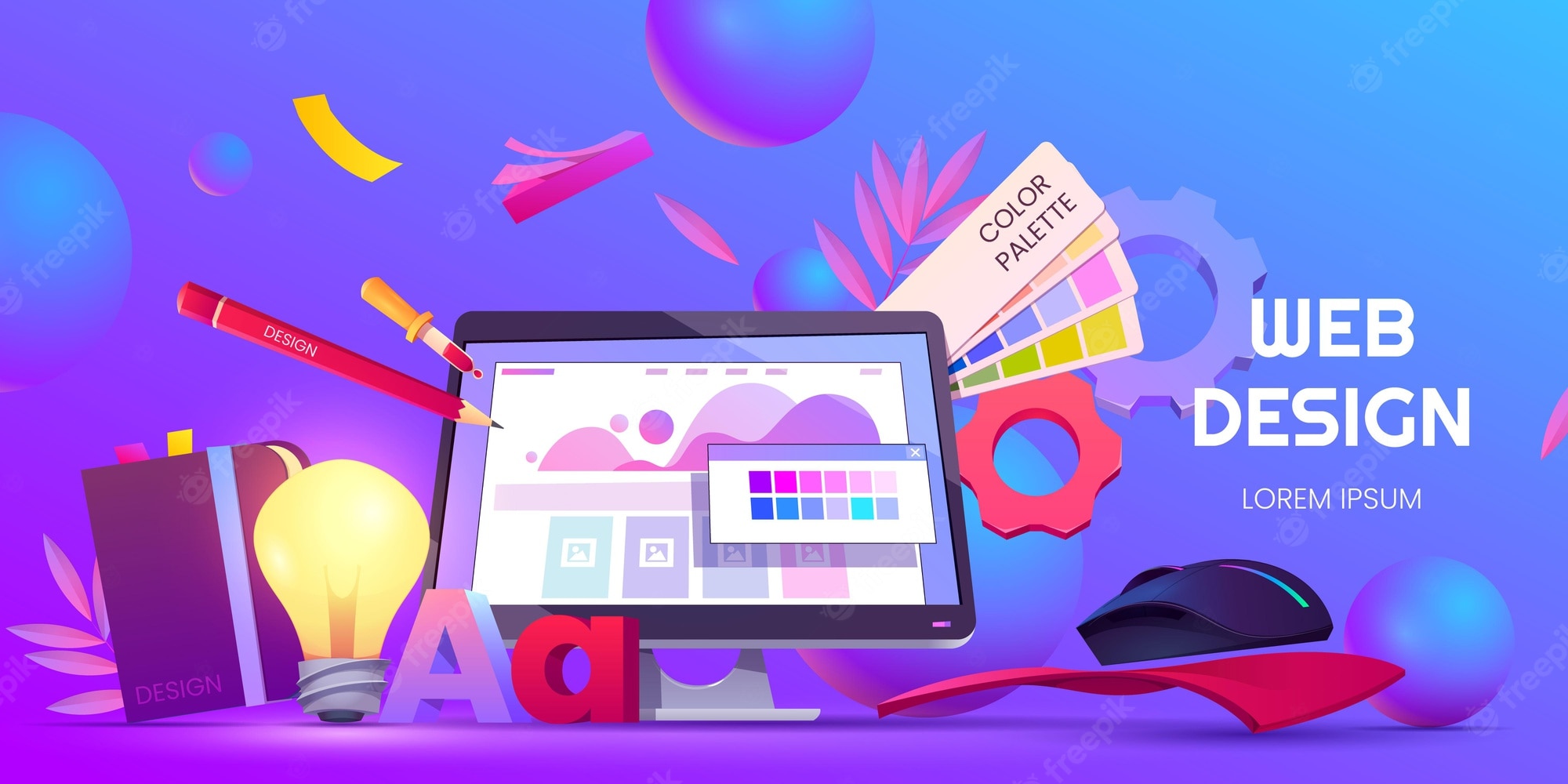Why consistency in branding is the secret weapon of a successful Website Design Agency
The Relevance of User Experience in Efficient Web Design Approaches
User experience (UX) serves as a keystone in efficient web design strategies. It shapes just how individuals communicate with a site, influencing their complete satisfaction and likelihood of returning. A well-designed UX can boost engagement with instinctive navigating and receptive designs. Nevertheless, neglecting these aspects may result in irritation and boosted bounce rates. Recognizing the complexities of UX is crucial for developers aiming to produce compelling electronic experiences that reverberate with varied target markets. What aspects genuinely drive successful user interaction?
Understanding User Experience and Its Influence On Style
User experience (UX) is frequently viewed as a simple aspect of internet style, it essentially shapes exactly how customers interact with a website. UX encompasses all facets of the user's interaction, including use, availability, and overall satisfaction. A positive UX promotes interaction, encouraging individuals to discover the website and return in the future. Alternatively, an unfavorable experience can cause aggravation, leading to high bounce rates and shed opportunities for conversion.
Style elements like layout, navigation, and web content company play critical duties in forming this experience. Effective UX layout prepares for user needs and choices, making sure that details is aesthetically attractive and easily obtainable. Furthermore, understanding user habits through analytics can supply valuable insights, informing design decisions that improve functionality. Ultimately, a comprehensive understanding of UX enables developers to develop internet sites that not only attract customers but also promote purposeful interactions that line up with business objectives and user assumptions.
Trick Principles of Efficient User Experience
Reliable user experience depends upon several vital concepts that enhance site performance and involvement. Intuitive navigation design, receptive layout fundamentals, and the importance of visual power structure are vital elements that add to a smooth communication between users and web content. Understanding these principles allows developers to develop more available and easy to use digital atmospheres.
Intuitive Navigation Style
When users come across a site, user-friendly navigating design functions as a critical gateway to their general experience. Effective navigating allows individuals to easily locate the details they look for, enhancing their communication with the site. Key principles include clear labeling, logical company, and constant positioning of navigating aspects. Tags ought to be uncomplicated, enabling customers to predict the content they will certainly locate. A well-structured pecking order aids users comprehend the relationship in between various areas, directing them through the web site effortlessly. Furthermore, receptive food selections and quickly obtainable web links add to a liquid experience across gadgets. By focusing on user-friendly navigating, developers can considerably reduce user stress and rise involvement, ultimately cultivating a favorable perception of the site and its web content.
Responsive Format Basics
A well-structured navigating system naturally brings about the need for a receptive design, which is crucial in today's diverse digital landscape. A receptive format warranties that websites function flawlessly across different devices, consisting of mobile phones, desktop computers, and tablets. This flexibility enhances user experience by permitting web content to be quickly available and aesthetically meaningful, no matter display dimension. Secret concepts of receptive layout include fluid grids, versatile pictures, and media questions, which facilitate ideal viewing. In addition, prioritizing touch-friendly aspects boosts communication on mobile phones. By executing a responsive format, developers can fit customers' needs, lessen bounce rates, and increase engagement. Ultimately, a well-executed receptive design cultivates a favorable user experience, urging visitors to check out the site even more.
Aesthetic Power Structure Relevance
Aesthetic hierarchy plays an important role in assisting customers via a web site, making certain that essential info records their attention first. By strategically using dimension, color, spacing, and contrast, designers can develop a clear pathway for users to adhere to. Bigger elements commonly draw the eye, indicating their significance, while contrasting colors can highlight contact us to activity. Additionally, regular positioning and collection of associated web content enhance comprehension, making navigating user-friendly. Effective use aesthetic hierarchy not just enhances functionality however likewise supports the total aesthetic of the website, cultivating a positive user experience. When users can conveniently identify one of the most important info, they are a lot more likely to involve with the content, leading to boosted fulfillment and communication with the web site.
The Duty of Use in Web Design
Usability plays a necessary role in web design, particularly via navigation simplicity and adherence to availability requirements. Effective navigating improves user fulfillment by allowing site visitors to find details promptly and without effort. Meeting access standards guarantees that all users, regardless of their capabilities, can successfully connect with the internet site.
Navigating Simplicity
Simplicity in navigating stands as a foundation of reliable web design, greatly influencing user experience. A structured navigation system enables customers to find info swiftly and without effort, lowering aggravation and enhancing satisfaction. Clear labeling and sensible structure are necessary aspects, assisting individuals effortlessly via the internet site. Redundant web links or extremely complicated menus can disorient users, causing enhanced bounce rates. Additionally, mobile responsiveness must be thought about, making sure navigation continues to be simple throughout gadgets. Decreasing and focusing on important web pages clutter further sustains user involvement. Efficient navigating not only cultivates a favorable experience however also encourages customers to explore the site better, ultimately resulting in higher conversion prices. In this respect, navigation simpleness functions as a critical element in the general effectiveness of web design methods.
Access Standards
User engagement is substantially boosted when websites stick to accessibility requirements, making sure that all individuals, no matter of their capabilities, can browse and connect properly. Compliance with these standards not only expands the target market however additionally enhances total user contentment. Obtainable design integrates features such as message choices for photos, keyboard navigating, click over here and enough shade comparison, which facilitate use by individuals with disabilities. Furthermore, implementing these standards can favorably influence seo (SEO) by boosting website structure and clearness. As web design evolves, focusing on ease of access ends up being necessary in promoting an inclusive digital environment. By welcoming these standards, designers contribute to an extra equitable internet, ultimately driving user loyalty and interaction.
Importance of Responsive Layout for User Engagement
As consumers increasingly accessibility web sites with a variety of tools, the importance of responsive style becomes extremely important for engaging users successfully. Responsive style warranties that a web site adapts perfectly to different screen dimensions, providing an optimal viewing experience despite the tool made use of. This adaptability boosts user interaction by facilitating easier navigating and communication with content.
When users run into an internet site that is receptive, they are most likely to remain much longer, discover better, and return in the future. A well-designed receptive layout minimizes the stress usually related to scrolling and zooming on smaller sized screens, therefore lowering bounce prices. Additionally, responsive style can favorably influence online search engine positions, as search engines focus on mobile-friendly web sites. In today's electronic landscape, where mobile usage proceeds to climb, executing responsive style is not just valuable, but vital for maintaining user interaction and ensuring a positive experience throughout all devices.
Enhancing Load Times for Better User Satisfaction

To improve lots times, web developers must prioritize optimizing images, leveraging web browser caching, and reducing HTTP requests. Additionally, employing Content Distribution Networks (CDNs) can accelerate content shipment by distributing it across numerous geographic areas. Improving code, such as compressing CSS and JavaScript documents, even more adds to faster packing speeds.
Eventually, a dedication to boosting lots times not just increases user contentment but also strengthens brand name commitment and improves the likelihood of repeat brows through. A swift, seamless experience is necessary for preserving individuals and promoting favorable interactions.
The Influence of Visual Power Structure on User Communication
Visual power structure works as an essential component in leading user interaction on a web site. By arranging material in a means that prioritizes info aesthetically, designers can influence just how individuals engage and browse with a site. This power structure is established through various layout methods, consisting of size, color, comparison, and spacing. As an example, larger font styles or bold colors accentuate critical aspects, such as contact us to activity or headlines, while subdued colors and smaller fonts can show subordinate details.
Efficient aesthetic power structure assists customers rapidly recognize what is essential, reducing cognitive load and boosting usability. It enables for intuitive navigating, making it less complicated for customers to locate what they require without disappointment. As individuals communicate with a website, a well-structured visual hierarchy promotes a more enjoyable experience, ultimately leading to higher involvement and conversion prices. Developers should focus on these principles to develop a efficient and more tips here user-centered internet setting.
Measuring User Experience: Tools and Methods

Regularly Asked Concerns
Just How Can I Improve My Internet site's User Experience on a Budget plan?
To improve an internet site's user experience on a budget, one can maximize web page load speed, streamline navigating, carry out receptive layout, enhance content clearness, and collect user comments for continuous refinements, guaranteeing a satisfying site visitor experience.
What Are Common User Experience Blunders to Avoid in Web Design?
Common user experience blunders in web design include chaotic formats, inadequate navigation, slow filling times, lack of mobile responsiveness, overlooking access, irregular branding, and stopping working to focus on user feedback - agency for web design. Each can significantly hinder total site performance
Exactly how Usually Should I Update My Site for Better User Experience?
Web sites must be updated regularly, preferably every couple of months, to keep excellent user experience. Regular updates aid address usability concerns, freshen web content, and adjust to transforming user needs, making sure the website continues to be appealing and relevant.

Can User Experience Effect SEO Rankings on My Web site?
User experience can greatly influence search engine optimization rankings, as internet search engine focus on internet sites that supply smooth navigation, quick filling times, and interesting content. Bonuses A favorable user experience can lead to reduced bounce prices and higher search visibility.
What Duty Does Access Play in User Experience Design?
Ease of access plays an essential function in user experience layout by ensuring that all people, despite capabilities, can navigate and interact with a web site successfully. This inclusivity improves total fulfillment and involvement amongst diverse individuals.
User experience (UX) is frequently regarded as a simple facet of web design, it basically forms exactly how customers interact with a web site. User interaction is significantly boosted when internet sites adhere to availability requirements, ensuring that all customers, no matter of their capabilities, can browse and interact successfully. Gauging user experience (UX) is important for understanding just how successfully a website satisfies the requirements of its individuals. In addition, usability testing, where actual customers navigate the website while onlookers note problems, offers straight feedback on user experience. Common user experience mistakes in internet design consist of messy designs, inadequate navigation, slow filling times, absence of mobile responsiveness, neglecting ease of access, irregular branding, and failing to focus on user responses.